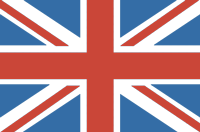Even as Russia bombards Ukraine with what is reportedly the largest drone attack of the war, states along Nato’s northeastern flank are already warning about Moscow’s next military campaign: an attack on the alliance itself. Pointing to signs of new Russian military construction and expanded defence production, officials in Finland and the Baltic states ominously predict that Russia is preparing for a war with Nato and could be ready to strike in as little as five years.
This assessment, however, is overblown and misleading. There is no evidence that Russian President Vladimir Putin is interested in fighting a war with Nato or that even a larger, modernised Russian military force would be able to successfully seize large swathes of Nato territory before being stopped by European defenders, with or without support from the United States. Donald Trump should not let fear-mongering — or accusations from the Kremlin that he is too emotional — disrupt his plans to reduce America’s role in Europe’s security in the near term.
Since 2022, Russia’s military has been single-mindedly focused on its war in Ukraine. Defence production has been dedicated to supplying troops on the front lines, and military personnel have been pulled from their home bases to support combat operations. On Nato’s northeastern flank, this has meant long periods of time with a limited Russian military presence — an aberration from Russia’s typical border posture.
That Moscow would plan and prepare to return forces to this region after the war ends represents not a sign of impending Russian aggression but instead an unsurprising reversion to the pre-war status quo. Moreover, given that Russia’s Nato neighbours have invested heavily in their militaries since 2022, building more advanced defensive and offensive capabilities, Russia will almost certainly respond in kind, upgrading the number and quality of the forces it sends to the country’s northwest — not to prepare for war but as a reaction to the changed military balance on its border.
Even with Russia’s planned military modernisation and build-up, there is no evidence that Putin has the intent to attack a Nato member state. In fact, the Russian leader has assiduously avoided a direct conflict with Nato even as he has expanded operations in Ukraine since 2014. Russia has not attacked shipments of US and European military equipment on their way to Ukrainian forces, has limited missile strikes in Ukraine’s western regions where the risk of an errant missile hitting Nato territory is high, and has refrained from intentional air incursions into Nato airspace near Ukraine’s borders. Given these examples of restraint, it seems unlikely that Putin’s next move would be to start the type of war he has eschewed to this point.
But even if Moscow did launch such a campaign, Europe should be confident in its ability to repel Russian forces, despite its military deficiencies and gaps. If a small country like Ukraine can fight Moscow to a stalemate, despite limited manpower and weapon shortages, Europe fighting as a collective — with many times Russia’s GDP and population — should be able to halt an incursion and drive Putin’s forces back, even without US military support.
Europe has two factors working in its favour: Russia’s military shortcomings and the advantages of defensive warfare. First, the war in Ukraine has revealed the Russian military’s significant weaknesses, including its limited ability to project power over long distances as would be required for an offensive into Nato territory. Second, Ukraine’s battlefield has underscored the advantages that accrue to the defender in modern warfare. In responding to a Russian attack, Europe would be able to exploit these advantages by establishing barriers like minefields and trenches and leveraging drones to make it difficult for an aggressor to advance.
For policymakers in Washington, the bottom line is that even a larger, modernised Russian military does not pose a direct threat to the United States or its interests in Europe, nor does it constitute a challenge that Europe cannot handle itself. The Trump administration should not let Europe’s dire warnings derail its efforts to disentangle itself from continental security burdens or delay its plans to draw down a US military presence in the region. Trump and his advisors should instead move full steam ahead, regardless of changes on the horizon for Russia’s military force.










Join the discussion
Join like minded readers that support our journalism by becoming a paid subscriber
To join the discussion in the comments, become a paid subscriber.
Join like minded readers that support our journalism, read unlimited articles and enjoy other subscriber-only benefits.
Subscribe